Halfway up Mount Lofty, a squat, scenic mountain that overlooks the Australian city of Adelaide, Badiucao is uneasy.
The dissident Chinese artist left his phone in the car, over an hour’s hike away, and now he feels cut off.
Even for a millennial, Badiucao – he uses a deliberately nonsensical pseudonym to protect his identity – is tied to his phone. With it in hand he is constantly checking Twitter, staying connected with China thanks to a non-stop stream of posts from journalists and fellow dissidents.
After almost seven years in self-imposed exile in Australia, more than anything else he fears being cut-off from his homeland, becoming another irrelevant overseas critic fighting yesterday’s battles.
Badiucao gallery
Censored
It was easier when he could use Weibo. Badiucao joined China’s heavily-censored but incredibly dynamic answer to Twitter in early 2011, around the time of the Wenzhou high-speed train crash.
That was a pivotal moment in Chinese internet history, as hundreds of commenters took to social media to question the authorities’ account of the disaster and fight back attempts at a cover-up.
“I felt this deepening of free expression, as everyone began to use the internet in a new way, I wanted to join in and be part of it,” he said.
Badiucao began drawing cartoons about the crash, soon expanding into commenting on other political topics and scandals, racking up thousands of followers in the process.
The more attention he got however, the more censors started paying notice as well. After having more than 30 accounts deleted, he felt forced to give the platform up.
“I couldn’t do it anymore. It wasn’t effective. Every drawing was deleted, if I wanted to register new accounts I would have to give my personal ID, or have someone else take the risk,” he said.
Weibo did not respond to a request for comment about its censorship policies.
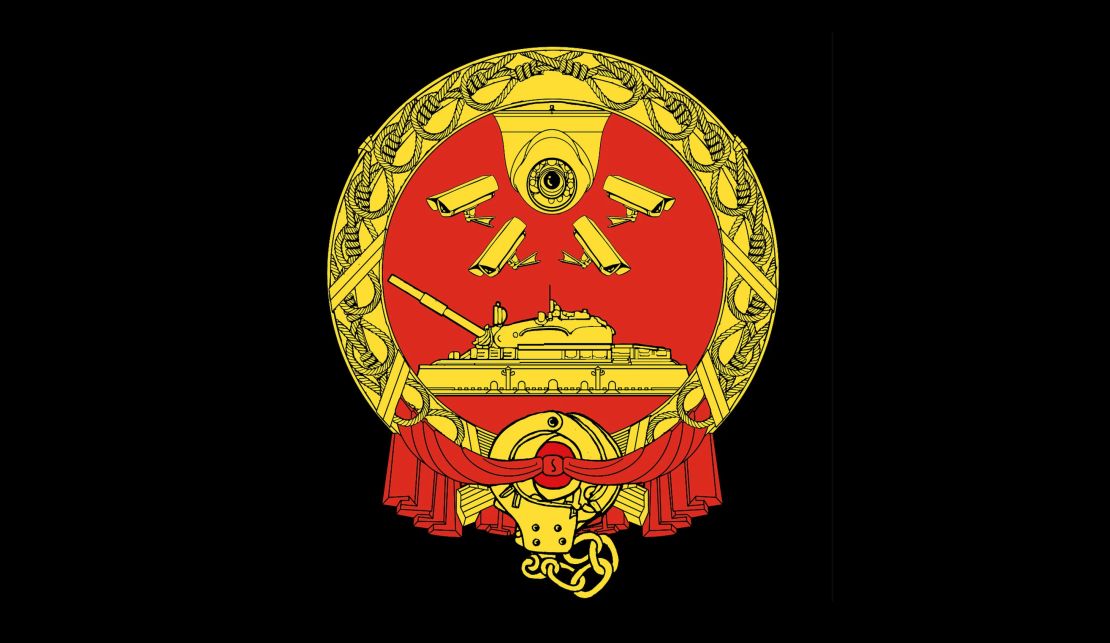
“Around 2010-2011 when Weibo was becoming very active, it was a relatively free medium, and a few cartoonists became popular,” said Sophie Beach, editor of the US-based censorship watchdog China Digital Times.
“Once the authorities started cracking down on Weibo, they specifically targeted several of these outspoken cartoonists and the environment shrunk for them.”
By now living outside China, Badiucao decamped to Twitter, from where his cartoons could still occasionally spread to the other side of the Great Firewall – China’s sprawling internet censorship apparatus – but there was no risk of account deletion.
Freed from worrying about what Chinese internet users sarcastically call “harmonization,” his profile continued to grow.
Badiucao's political cartoons
When five young feminists were jailed in 2015 for trying to organize a campaign against sexual harassment on public transport in Beijing, Badiucao drew portraits of them. These were widely used in media coverage of the case, as were ones he later produced for Amnesty International highlighting the plight of dozens of lawyers and activists jailed in an ongoing crackdown on Chinese civil society.
“Badiucao has a knowledge and understanding of China and its human rights situation that comes from being a highly interested and keen observer,” said Amnesty International’s Tanny Chia. “His is a distinctive and impactful style that is quickly recognized among Chinese netizens.”
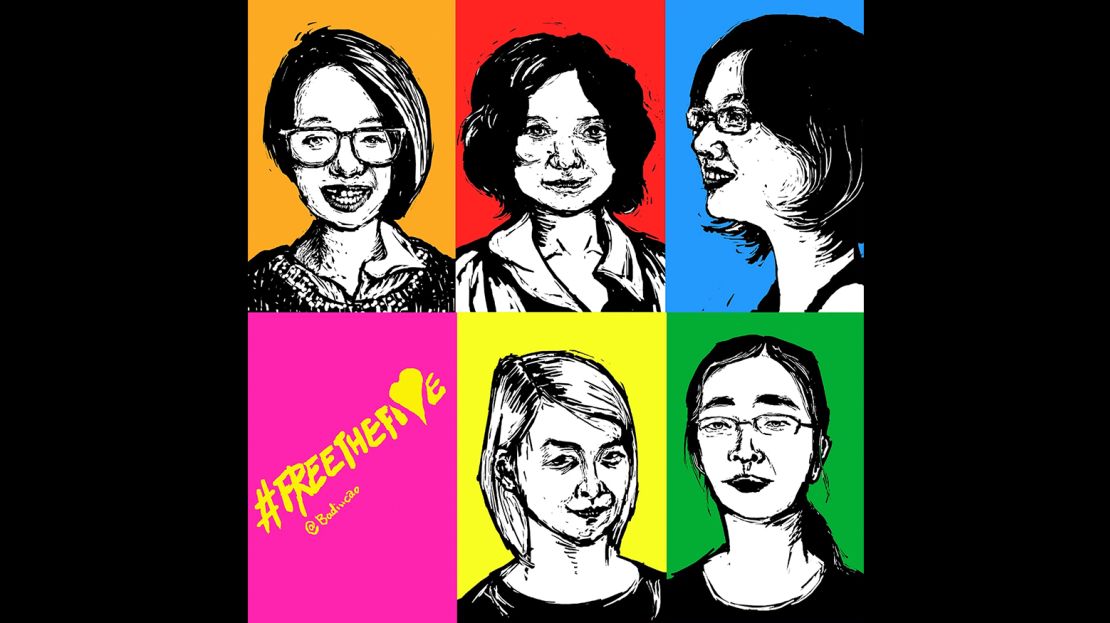
Expression
Badiucao’s cartoons meld the thick, blocky lines of German expressionism with the red-and-black punchiness of Chinese Communist propaganda posters.
“When I first saw Badiucao’s work it resonated for me. It reminded me of Käthe Kollwitz’s woodcuts,” Canadian cartoonist Daniel Murphy said, referring to the early-20th century German artist.
According to Murphy, just as Kollwitz used posters and pamphlets to spread her political beliefs, Badiucao has taken advantage of social media.
“There’s a power in pictures, they can immediately undermine some ruler on a golden throne in a golden hat and draped in ermine,” he said. “It’s the quickest way to yank somebody off a perch.”
China Digital Times’ Beach said that Badiucao’s style lends itself to China’s often opaque online discussions.
“Whereas a lot of the time people writing about politics in China use all this coded language, cartoons are a direct form of expression,” she said.
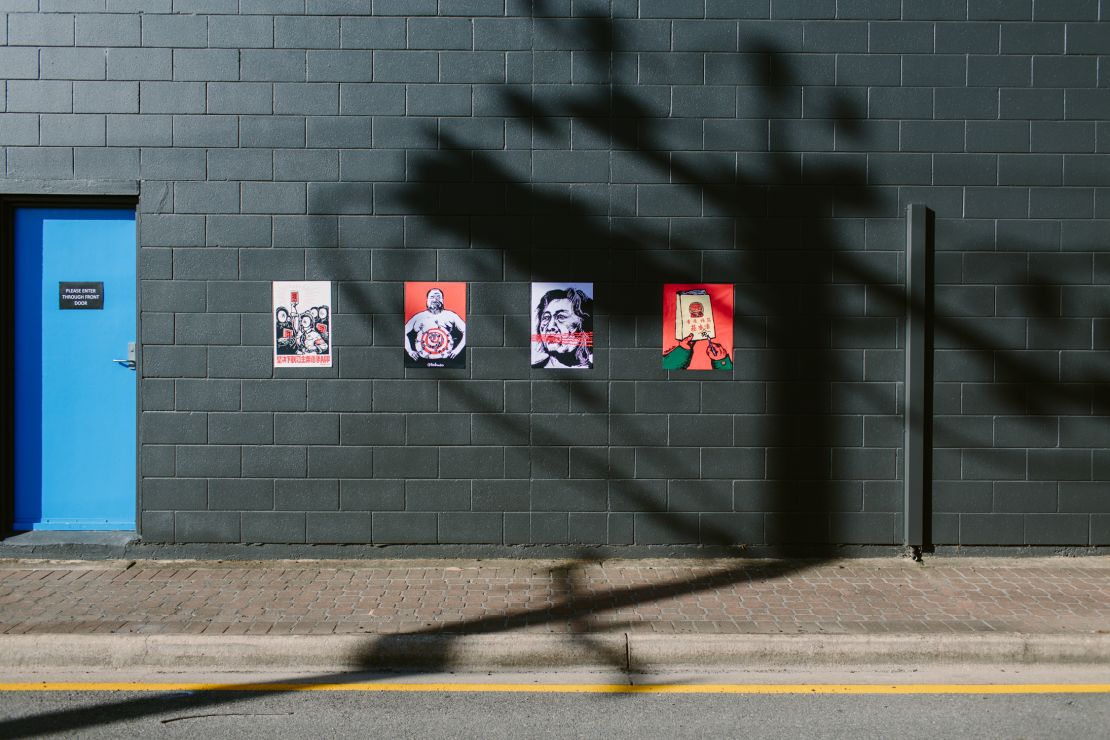
Beach compared Badiucao to China’s best-known dissident artist. “He has that same in your face manner as Ai Weiwei, of not caring what the authorities think,” she said.
Outspoken Chinese artists often don’t fare well at home. Ai was put under house arrest in 2010 and detained by the Chinese government in 2011 in a separate incident for tax evasion, and has claimed he found government listening devices in his apartment.
Cartoonist Wang Liming, better known as Rebel Pepper, fled to Japan in 2014 after what he said was prolonged harassment from the authorities.
“Maybe the Party wants to admonish people one by one as examples,” Wang said in 2015. “If they don’t throw you in jail, they’ll make it impossible for you to live.”

Expansion
Like Ai Weiwei, Badiucao creates work in a number of different formats. His first major art show opened in Adelaide, Australia, in September 2016.
During that show, the artist stood silently in the corner in a prison jumpsuit with a hood over his head, both present and absent at the same time. A DJ played as attendees milled around, looking at brightly colored campaign posters stuck to the walls casting Chinese President Xi Jinping as a candidate in the recent Australian general election.
Under Xi’s face, painted in thick, blotchy oils, were slogans like “China’s Reds for the chairman,” and “We’ll put Party first.”
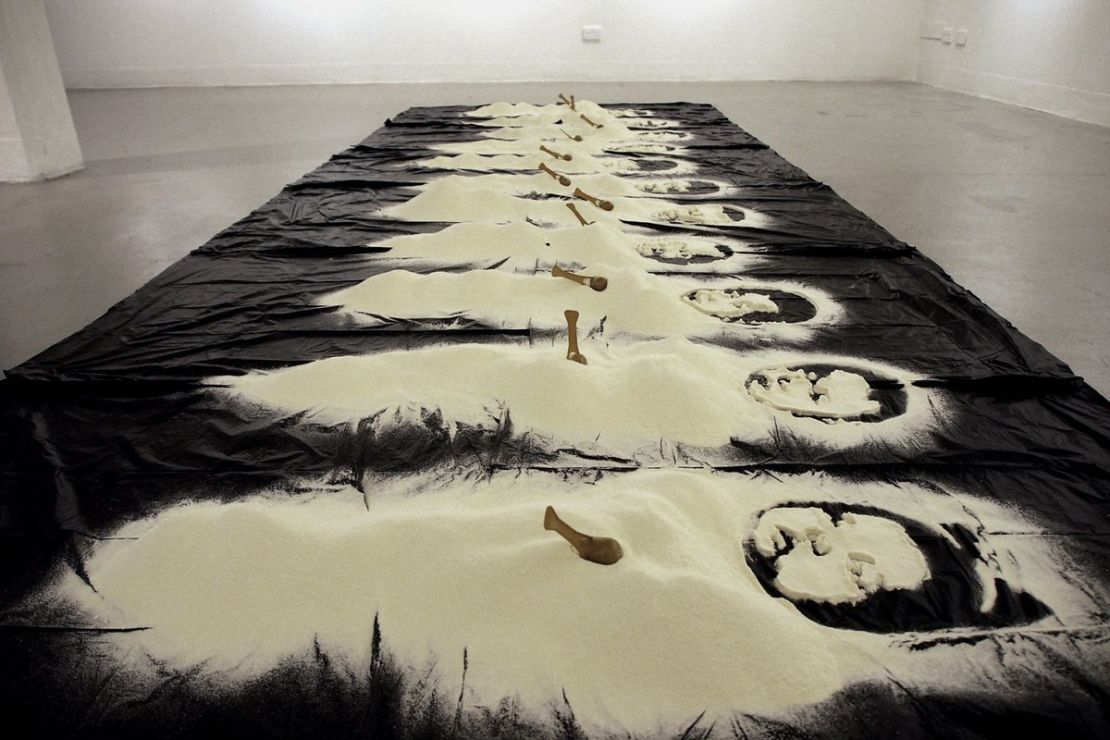
On the floor, mounds of baby formula were piled on top of a black tarp and shaped to form the faces of six children killed in 2008 by a batch of milk powder contaminated with melamine, an industrial chemical used for making plastic tableware. Over the course of the two-month installation, the powder reacted with the moisture in the air, the faces of the children blurring and disappearing just as the story has faded from the headlines.
Opposite the powder, in a small glass case, lay the catalyst for the show, and Badiucao’s desire to push beyond his previous work. A passport, its dark red cover embossed with the emblem of the People’s Republic of China, with the top right corner sliced off. After years overseas, Badiucao is no longer a Chinese citizen.
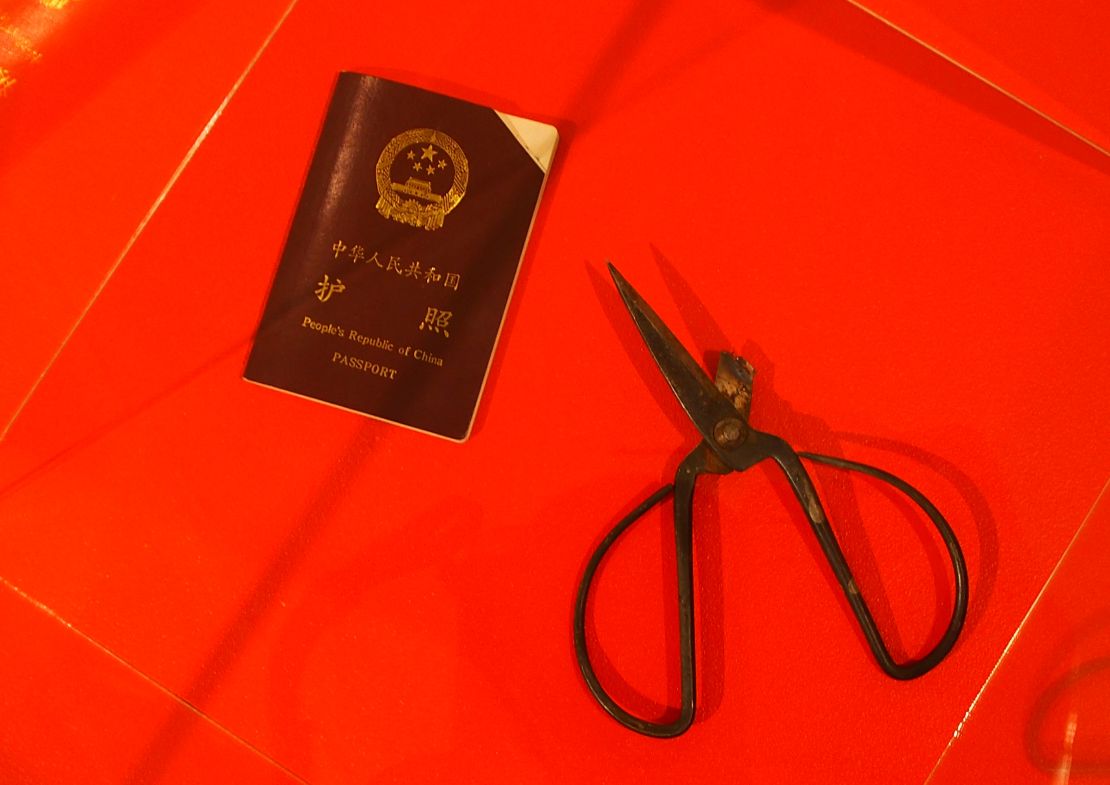
Upbringing
Badiucao’s parents hoped he would not be political. He said his grandparents were imprisoned during Mao Zedong’s Anti-Rightist Movement and his father grew up an orphan.
His parents encouraged him to be a dentist or hairdresser – “jobs that never get in trouble with the authorities” – but instead he went to law school, dreaming of joining the ranks of China’s incredibly brave and often arrested human rights lawyers.
At university, a roommate acquired a copy of the 1995 film “The Gate of Heavenly Peace,” about the Tiananmen Square massacre of June 4, 1989.
“The guy who downloaded the documentary is now a public security officer,” Badiucao said. “There’s no room for that kind of thought outside university. China makes it just hard enough to achieve that people have to censor and watch themselves to get ahead.”
The film had a profound effect on Badiucao however, one that is still visible in his work today.
On the 2016 anniversary of the massacre, he re-created the famous Tank Man moment in Adelaide’s city center, standing impassively dressed in black-and-white, with shopping bags at his side and a mask covering his face, until security guards forced him to leave.
His parents sensed the danger in his talent and rebelliousness. “It was a constant struggle as I was growing up,” he said. “There were lots of fights.”
Thinking of home
Even as he gets further away from the country of his birth – becoming an Australian citizen and getting more involved in local politics and issues – Badiucao has strived to maintain his relevance in China.
His latest show – “Home Thoughts From Abroad,” which ran until April 6 – is a collaboration with two other artists who exist at the crux of two countries, Afghan refugee Elyas Alavi and Filipina-Iranian Aida Azin.
Badiucao’s contributions to the show include a selection of his political cartoons, a giant air-pollution mask made from a Chinese flag, and a bed (the first he ever slept on when he came to Australia), with the mattress replaced by 4,000 individually-sharpened pencils.
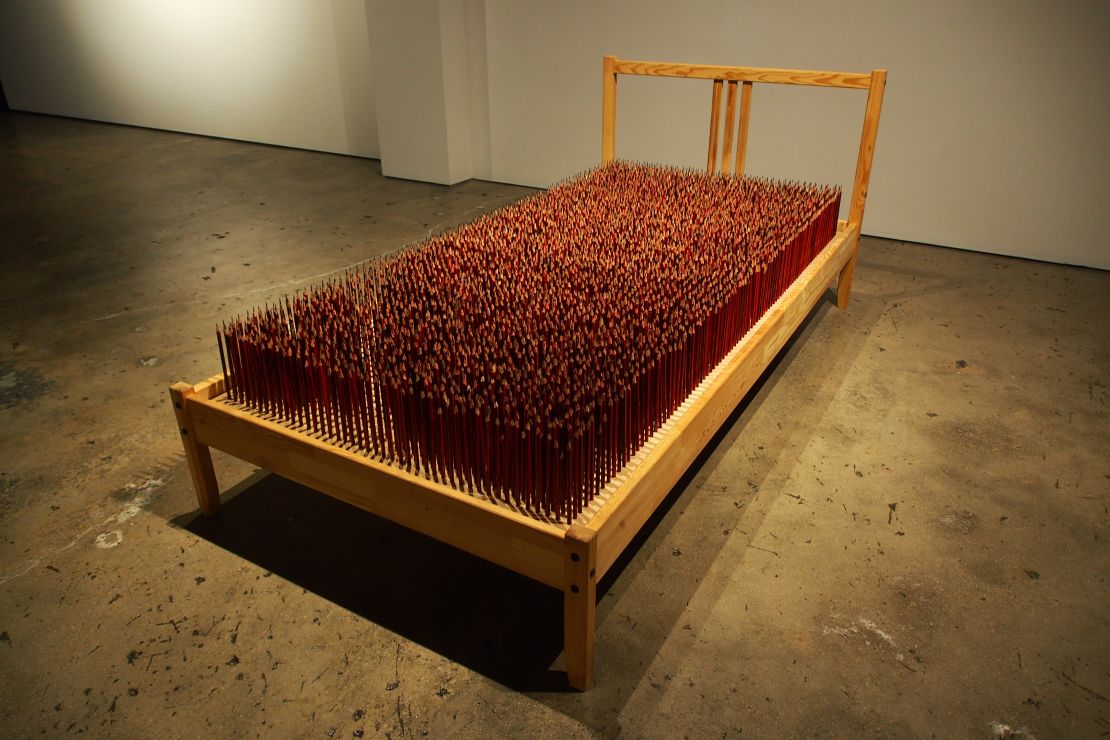
He sharpened all the pencils, ordered in bulk from a Chinese website, by hand. “First they were all the same, after I sharpened them, I gave them individuality, made them different,” he said.
He then took it away, with the piece representing his fear of fading back into the mass of China writ large: “On the bed they become united again, the personal characteristics of each pencil disappears, as if the individual is coming back under the control of the nation.”
While Badiucao’s installation work is based on his cartoons, curator Joanna Kitto said that creating 3D versions of the work added a layer of complexity not always visible in print.
“Cartoons must be very direct in the way they speak about issues, when you (create installations) you need to leave a degree of space for the audience,” Kitto said.
Badiucao agreed. “People can feel that cartoons are exaggerations,” he said.
“By making it into a real object, it will bring audiences back to reality. This is not a joke, this is something happening in the real world.”





















